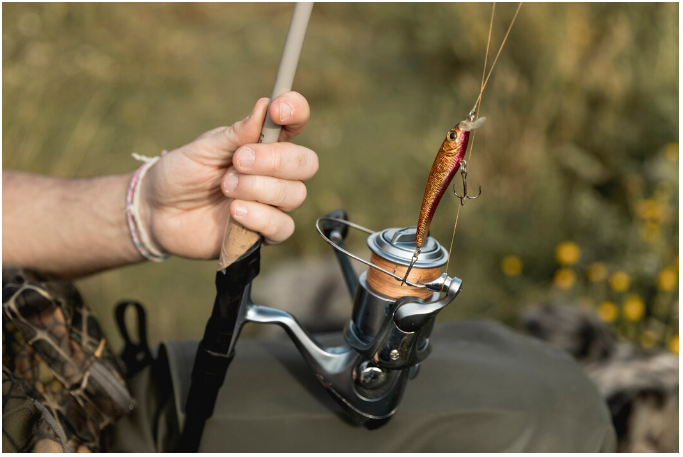Fishing is an age-old pastime that has evolved into a beloved hobby and a competitive sport. Whether you are a novice or a seasoned angler, this fishing guide aims to provide valuable insights and tips to enhance your fishing experience. From selecting the right gear to mastering advanced techniques, this comprehensive guide will help you reel in success on your fishing adventures.
Understanding the Basics
Types of Fishing
Fishing can be broadly categorized into two types: freshwater and saltwater fishing. Freshwater fishing takes place in lakes, rivers, and streams, while saltwater fishing occurs in oceans and seas. Each type of fishing requires different techniques, equipment, and knowledge of the aquatic environment.
Fishing Gear Essentials
For beginners, choosing the right gear can be daunting. Here are the essential items to get you started:
- Rod and Reel: A medium-action rod paired with a spinning reel is versatile and user-friendly, making it ideal for beginners.
- Fishing Line: Monofilament line is recommended for its ease of use and versatility.
- Hooks and Bait: Start with a variety of hook sizes and live bait such as worms or artificial lures.
- Tackle Box: Keep your gear organized with a tackle box that includes extra hooks, sinkers, and lures.
- Safety Gear: Don’t forget essentials like a life jacket, sunscreen, and a first-aid kit.
Techniques for Success
Casting
Casting is a fundamental skill that every angler needs to master. To cast effectively:
- Grip the Rod: Hold the rod with a firm but relaxed grip.
- Position the Reel: Ensure the reel is on top for spinning reels or on the bottom for baitcasting reels.
- Swing the Rod: Use a smooth, fluid motion to swing the rod back and then forward.
- Release the Line: Release the line as you bring the rod forward, allowing the bait to land gently on the water.
Hooking and Landing Fish
Once you feel a tug on the line, it’s time to set the hook and reel in your catch:
- Set the Hook: Quickly lift the rod tip to drive the hook into the fish’s mouth.
- Reel in the Fish: Maintain tension on the line and use a steady reeling motion to bring the fish in.
- Use a Net: For larger fish, use a net to scoop them out of the water safely.
Advanced Techniques
Fly Fishing
Fly fishing is a specialized technique that involves using lightweight artificial flies as bait. This method requires a unique casting technique where the weight of the line propels the fly forward. Fly fishing is particularly effective in freshwater environments and is often used to catch trout and salmon.
Deep-Sea Fishing
For those looking to catch larger, more challenging fish, deep-sea fishing is an exciting option. This type of fishing involves heading out to deeper waters where species like marlin, tuna, and swordfish reside. Specialized gear, including heavy-duty rods, reels, and strong fishing lines, is essential for this type of fishing.
Environmental and Ethical Considerations
Catch and Release
Practicing catch and release is crucial for conserving fish populations. Follow these steps to ensure the fish’s survival:
- Use Barbless Hooks: Barbless hooks are easier to remove and cause less harm to the fish.
- Handle with Care: Wet your hands before handling the fish to protect its slime coating.
- Quick Release: Minimize the time the fish is out of the water and release it gently.
Protecting the Environment
As anglers, it is our responsibility to protect the aquatic environment. Avoid littering, use biodegradable products when possible, and be mindful of local fishing regulations to help preserve fish habitats.
Choosing the Right Fishing Spot
Freshwater Locations
Lakes, rivers, and ponds are excellent spots for freshwater fishing. Research local fishing reports to find out which species are active and the best times to fish. Public access points and fishing piers are great places to start.
Saltwater Locations
For saltwater fishing, coastal areas, estuaries, and deep-sea locations offer diverse fishing opportunities. Check tide charts and weather conditions to plan your trip. Charter boats can provide access to prime fishing spots and experienced guides.
Community and Resources
Joining a Fishing Club
Fishing clubs and organizations offer a great way to connect with fellow anglers, share knowledge, and participate in events. These communities can provide mentorship for beginners and new challenges for experienced anglers.
Online Resources
The internet is a treasure trove of information for anglers. Websites, forums, and social media groups dedicated to fishing can provide tips, reviews, and the latest news on fishing trends and techniques. Consider subscribing to fishing magazines and following YouTube channels that offer instructional videos.
Conclusion
Fishing is a rewarding activity that offers endless opportunities for learning and adventure. Whether you are casting your first line or refining your technique, this fishing guide provides the essential information needed for a successful fishing experience. Embrace the journey, respect the environment, and enjoy the tranquility and thrill that fishing brings.




